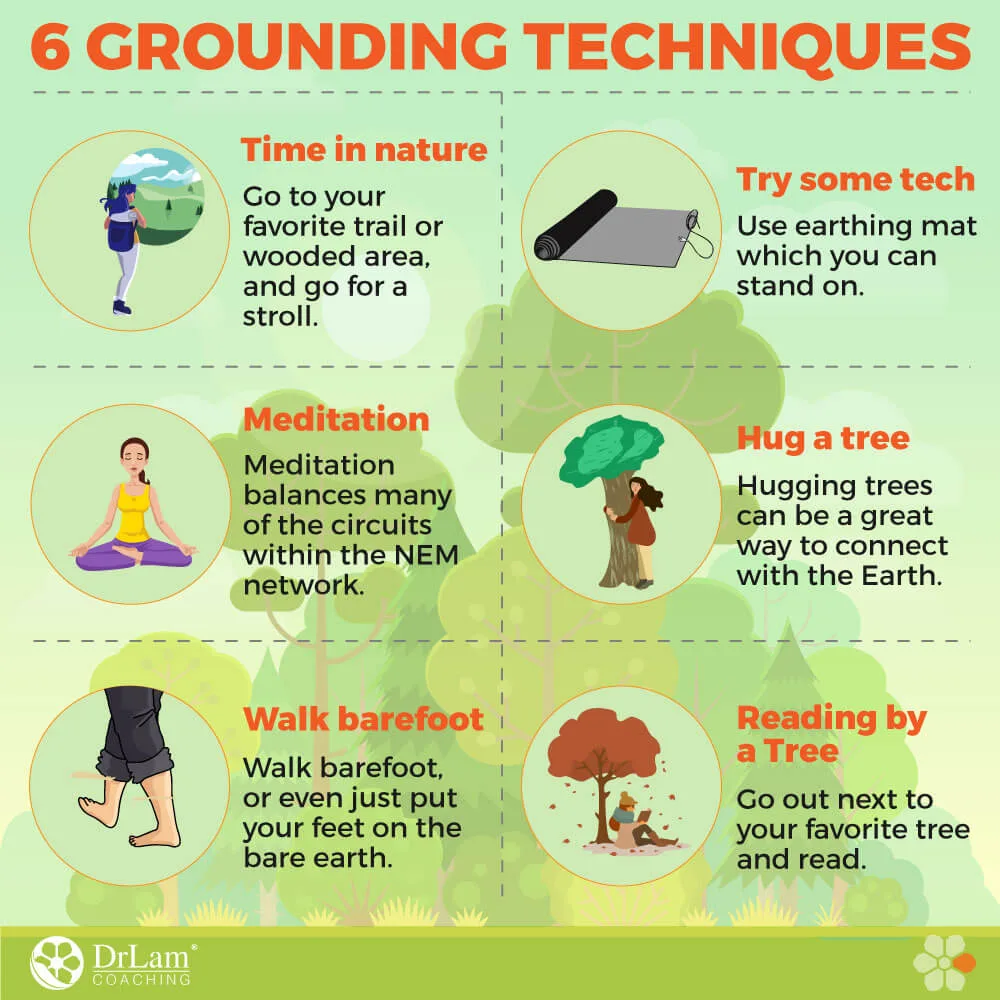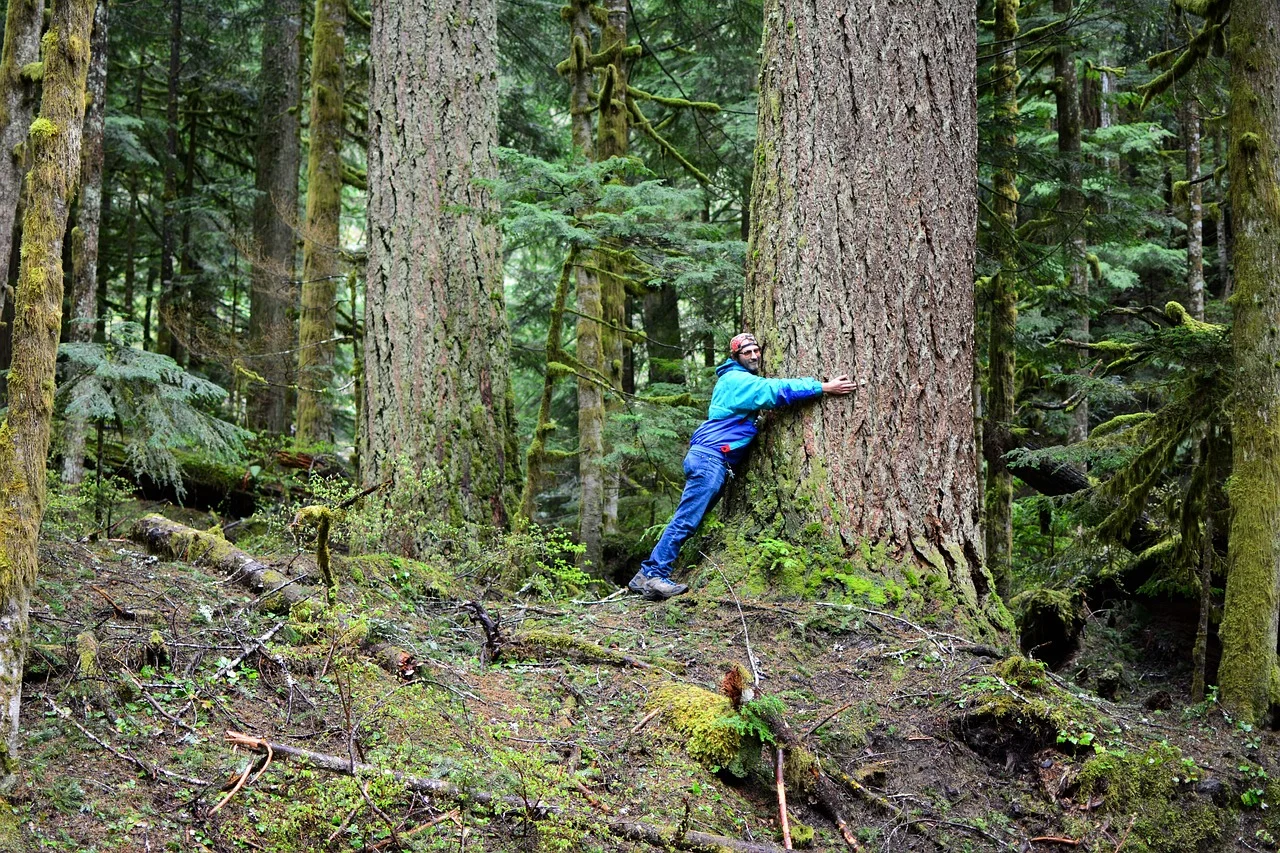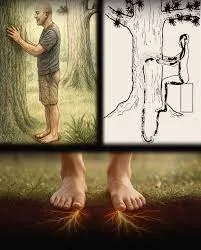Touch a Tree, Change Your Mind: The Science and Serenity of Grounding with Nature

Most people scroll past this truth: touching a tree—especially barefoot—can literally change your state of mind. In a world wired with screens and stress, our bodies are still built for nature. Grounding, or “earthing,” isn’t just hippie talk—studies suggest it can calm your nervous system, steady your breath, and melt away stress. Trees have stood in silence for decades, sometimes centuries. When you press your hands to their bark and your feet to the earth, it’s like plugging back into the planet itself. Many report feeling lighter, clearer, and more balanced after just 15 minutes—as if the tree absorbed their tension and returned peace. Science, spirituality, or common sense: the effect is real. Maybe the reset you need isn’t another app, but a barefoot step toward something ancient and alive. As of November 16, 2025, amid rising mental health concerns, this simple practice offers a free, accessible antidote to modern overload.

What Is Grounding? The Basics of Earthing
Grounding involves direct physical contact with the Earth’s surface—walking barefoot on grass, soil, or sand, or touching natural elements like trees. The theory: Earth carries a negative electrical charge, and contact allows electrons to flow into the body, neutralizing positive free radicals linked to inflammation and stress.
- Tree Hugging Variant: Press palms against bark (rough texture stimulates sensory nerves) while standing barefoot on roots or soil.
- Duration: Benefits often felt in 10–20 minutes; studies recommend 30–40 minutes daily for measurable effects.
- Accessibility: Free, anywhere with trees—parks, forests, backyards.
Coined “earthing” by Clint Ober in the 1990s, it draws from indigenous practices worldwide, like Native American barefoot rituals or Japanese shinrin-yoku (forest bathing).

The Science: What Studies Say
Peer-reviewed research supports grounding’s physiological benefits:
| Study | Key Findings |
| Chevalier et al. (2012), Journal of Environmental and Public Health | 20 minutes of grounding reduced blood viscosity by 270%; improved zeta potential (blood flow). |
| Ghaly & Teplitz (2004), Journal of Alternative and Complementary Medicine | Grounding normalized cortisol levels, improved sleep in 12 subjects. |
| Oschman et al. (2015), Journal of Inflammation Research | Electrons from Earth act as antioxidants, reducing inflammation markers (CRP, IL-6). |
| Menigoz et al. (2020), Explore | 1 hour daily for 8 weeks lowered chronic pain, stress, and depression scores by 20–40%. |
Mechanism:
- Electron Transfer: Neutralizes free radicals → ↓ inflammation.
- Vagus Nerve Stimulation: Barefoot contact activates parasympathetic system → ↓ heart rate, ↑ HRV.
- Sensory Input: Bark texture + soil microbes engage somatosensory cortex, shifting brain from beta (stress) to alpha (relaxed) waves.
A 2023 meta-analysis in Frontiers in Physiology confirmed: grounding reduces sympathetic activity, mimicking meditation effects.
The Mind-Body Shift: What People Feel
- Immediate: Tingling in feet/hands, warmth spreading upward.
- 15 Minutes: Breath deepens, shoulders drop, mind quiets.
- Aftermath: Improved mood, better sleep, reduced anxiety.
User reports (e.g., Reddit r/earthing, 50k+ members):
“Touched an oak barefoot—felt like my anxiety drained into the roots. Slept 8 hours straight for the first time in months.”
Trees as Partners: Why They Amplify Grounding
Trees aren’t just props—they’re conductors:
- Root Systems: Extend deep into mineral-rich soil, enhancing electron flow.
- Bark: Rough, fractal patterns stimulate mechanoreceptors in skin.
- Phytoncides: Antimicrobial compounds released by trees (e.g., pine) reduce cortisol when inhaled.
Best Trees:
- Oak: Deep roots, high conductivity.
- Pine: Strong phytoncide emission.
- Willow: Near water, moist soil = better grounding.
How to Practice Safely
- Find a Tree: Park, forest, or backyard. Avoid treated wood or urban pollution.
- Go Barefoot: On soil/grass (not concrete). Remove socks.
- Touch: Press palms flat against bark at heart level.
- Breathe: Inhale 4 counts, exhale 6. Visualize tension flowing down.
- Time: 15–30 minutes. Morning or sunset optimal.
- Safety: Check for insects, thorns, or allergens. Avoid lightning-prone areas.
Pro Tip: Combine with shinrin-yoku—mindful forest walking.
In a Screen-Dominated World
- Average Screen Time (2025): 7+ hours/day (Statista).
- Nature Deficit: 80% of Americans live in urban areas; <20% visit parks weekly.
- Mental Health Crisis: 1 in 5 adults report anxiety; grounding offers a zero-cost intervention.
Like the Moors’ gardens in Al-Andalus or the Dahomey Amazons’ connection to land, trees remind us: we are part of the Earth, not apart from it.
Try It Today
Next time stress spikes:
- Step outside.
- Find a tree.
- Touch. Breathe. Ground.
The reset isn’t in your phone—it’s under your feet.
A tree stood for 100 years. You need 15 minutes.
Touch it. Feel the shift.
Nature’s original therapy—free, ancient, and waiting.
Also Read this
The Therapeutic Benefits Of Hugging Trees: A True Nature’s Embrace

The benefits of spending time in nature and the positive impacts on well-being are supported by a range of scientific studies in fields such as environmental psychology, public health and medicine. Words such as ‘nature and health’, ‘forest therapy’, and ‘green spaces and well-being’ prove that being in the natural environment can improve our physical, mental and emotional well-being.
This article will delve into the captivating world of forest therapy and the incredible benefits of hugging trees.
Introduction
Picture this: You’re standing beneath the soothing canopy of a forest, surrounded by majestic trees that have witnessed centuries pass by. As you press your body against the rough bark of one of these towering giants, you feel a sense of calm wash over you. Above you, the leaves spreading across the sky give a feeling of protection. This isn’t merely a romanticised scene; it’s the essence of tree hugging, an age-old practice that has gained scientific recognition for its numerous health benefits.
In today’s fast-paced, technology-driven world, our disconnection from nature has led to stress, anxiety, and a range of physical and mental health issues. But within the quiet embrace of a tree lies a remedy that humans have intuitively known for generations.
The Ancient Wisdom of Tree Hugging
Tree hugging, or ‘shinrin-yoku’ (forest bathing) as it is known in Japan, has deep roots in ancient cultures worldwide. Indigenous communities and ancient traditions have long recognized the spiritual and healing qualities of trees. Many believed that trees possessed a unique energy, a life force that could be transferred to humans through physical contact.
In Native American cultures, for instance, the act of hugging trees was seen as a way to connect with the wisdom of nature and to heal both body and soul. In India, the revered practice of ‘Vriksha Ayurveda’ involved leaning against trees to absorb their healing vibrations.
The Science Behind Tree Hugging
While ancient wisdom has its merits, the contemporary scientific community has also taken a keen interest in tree hugging. Research into the practice of forest therapy has provided empirical evidence of its benefits. Here are some compelling reasons to embrace this natural therapy:
Stress Reduction: Stress is an unfortunate companion of modern life, contributing to numerous health issues. Research published in the journal Environmental Health and Preventive Medicine (Ohtsuka, 2017) demonstrated that simply touching a tree for a few minutes can reduce stress hormone levels, leading to feelings of relaxation and calm.
Immune System Boost: Trees release phytoncides, natural compounds that protect them from disease. When we hug a tree or breathe in the forest air, we absorb these phytoncides, which have been shown to enhance our immune system’s function (Li, 2008).
Improved Mood: A study published in the journal Landscape and Urban Planning (Song, 2018) found that spending time with trees and engaging in forest therapy can significantly improve mood and reduce symptoms of depression and anxiety.
Lower Blood Pressure: High blood pressure is a major health concern, but regular tree hugging may help. A study in the Journal of Cardiology (Mao et al., 2012) demonstrated that participants who spent time in forests and hugged trees had lower blood pressure compared to those who did not.
Enhanced Creativity and Cognitive Function: Nature has a remarkable effect on our cognitive abilities. A study published in PLOS ONE (Berman et al., 2012) found that interacting with nature, including hugging trees, can improve cognitive function, creativity, and overall mental well-being.
The Healing Power of Connection
The benefits of tree hugging extend beyond the physical. They are deeply rooted in the emotional and psychological realms of human experience. Tree hugging fosters a profound sense of connection, both with nature and with oneself.
Nature Connection: Trees, as the elders of the natural world, have a unique ability to anchor us in the present moment. When we hug a tree, we enter a state of mindfulness, where the worries of the past and future fade away. This connection with nature provides solace and a sense of belonging.
Emotional Release: Trees have an extraordinary capacity to absorb negative energy. When we hug a tree, we can release pent-up emotions, finding comfort and support in the tree’s stoic presence. Many individuals report feeling a profound sense of relief after a heartfelt tree embrace.
Inner Calm: In our frenetic lives, inner calm is a precious commodity. Tree hugging offers a sanctuary of tranquillity, allowing us to disconnect from the chaos of urban existence and rediscover our inner peace.
Self-Reflection: The act of hugging a tree can serve as a meditative practice. It encourages introspection, self-discovery, and personal growth. As we stand in the embrace of a tree, we may find solutions to problems or gain insight into our lives.
Embracing Trees for a Healthier Future
In a world grappling with climate change, deforestation, and environmental degradation, our connection with trees has never been more critical. Hugging trees is not only a means of personal healing but also a powerful reminder of our interconnectedness with nature.
The practice of tree hugging encourages us to view trees not merely as resources to be exploited but as living beings that sustain life on Earth. It fosters a deep sense of responsibility for the environment and inspires us to take actions that protect and preserve our natural world.
Conclusion
In a time when the demands of modern life often pull us away from nature, tree hugging serves as a poignant reminder of the healing power of our natural surroundings. The benefits, supported by both ancient wisdom and contemporary research, are far-reaching. From stress reduction to emotional release and a profound sense of connection, tree hugging offers a path to improved physical, mental, and emotional well-being.
As we stand beneath the branches of ancient trees, we not only heal ourselves but also cultivate a deeper appreciation for the invaluable role that trees play in sustaining life on Earth. By embracing trees, we embrace a healthier, more harmonious future for ourselves and the planet we call home.
Dr Monica Mastrantonio
References:
Song, C., Ikei, H., Kobayashi, M., Miura, T., & Kagawa, T. (2018). Effect of forest walking on autonomic nervous system activity in middle-aged hypertensive individuals: A pilot study. International Journal of Environmental Research and Public Health, 15(12), 2803.





